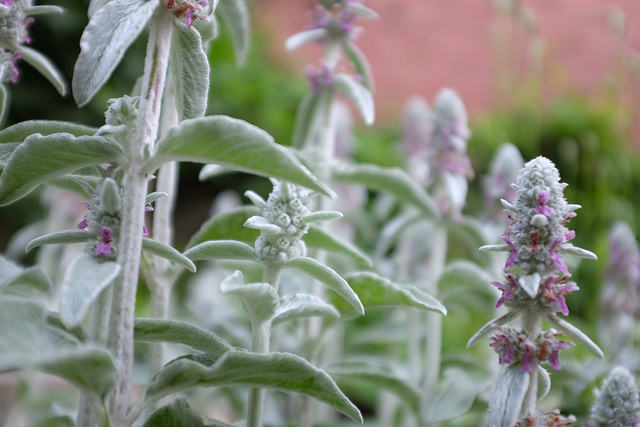I spent a considerable amount of time this week among the Lamb’s Ear in the garden. Here’s what you might not know about this common plant:
- It has herbal remedy properties. My herbalist sister calls it “nature’s band aid” because it’s able to adhere to your cut or scrape to keep it clean.
- It’s prolific. It has flourished under my black thumb.
- It’s actually quite beautiful. It has a silvery look and is soft to the touch. The blooms are also attractive.
- Some would classify it as a WEED.
There’s a class of people who turn their noses at the Lamb’s Ear, and after such work of getting rid of it, I might join the club. I’m pretty certain the previous owners of the house planted the flower in a few places as part of the landscaping, yet I’ve spent hours yanking it out by the handfuls.
More than once, I’ve wondered who gets to decide whether a plant is, indeed, a weed or worthy cultivation in a flower bed. I mean, who had it in for the dandelion? Ask any 5-year-old and they would tell you that it’s a complete atrocity to believe the sun-headed flower could be such a nuisance.
I decided the line between flower and weed gets crossed when you no longer have the ability to keep it where you want it to grow. It gets out of order. It might even take over.
A plant goes from desired landscaping to pesky intruder when the gardener is no longer in charge. It might be beautiful. It’s probably helpful in some way. You might even really like it. But it gets out of control. And keeping it around means more rewardless work than beauty and enjoyment.
I have to wonder how many of us keep proverbial gardens full of weeds in our lives. It’s probably something we originally planted with purpose, but it grew uncontrollably, perhaps to the extent that it’s overgrowing a beloved rose bush. This thing in your life: it could be beautiful. It’s probably helpful. And you might even really like it. But it’s out of control.
Sometimes a plant is a flower. Sometimes it’s a weed. How do you know the difference? Check the health of the plants around it. And ensure you have space to walk – if you cannot even move about, to enjoy it’s beauty, what’s the good of keeping it around?


